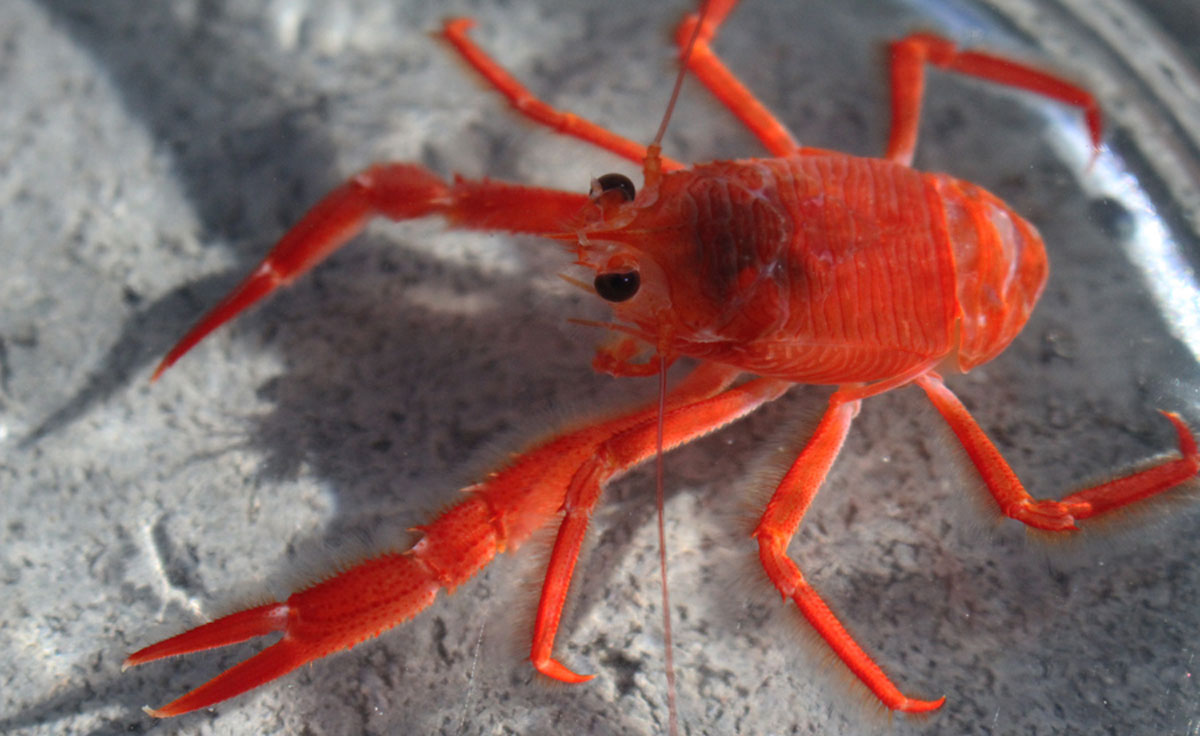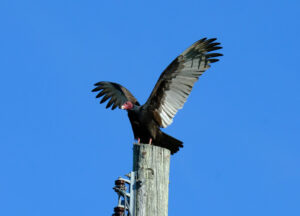Bodega Marine Lab research coordinator Jacqueline Sones and ecology professor Eric Sanford often walk the beaches of the North Coast, looking for interesting or unusual things to photograph or take back to the lab. For the last two years, with sea surface temperatures in the North Pacific at unusual highs, they’ve found lots of creatures that normally live much further south, in more tropical water. One thing they hadn’t found was a living pelagic red crab – until late January, when one of their regular walks along the beach at the mouth of Salmon Creek turned up several of the rare visitors.
“The funny part is that we didn’t know when we first found one if it was alive or not,” Sones says. “We were taking pictures of the crab then touched it and it moved! Our next thought was, are there any others, so we walked down the beach and found others washed up along the high tide line. It was very exciting, like an Easter egg hunt.”
Pelagic red crabs, also known as tuna crabs or red crabs because of their color, are usually found off Baja California. Despite their name the crabs are a species of squat lobster, easily identified by their bright color, large eyes, small size, and a tail, which is usually tucked under their bodies.

Sones and Sanford have found parts of these crabs at Salmon Creek Beach before, but never a live one. While there have been sightings over the past few years in Monterey County and Newport Beach, there has not been a live sighting of red crabs north of Monterey since 1985, following the 1982-1983 El Niño. Like the sighting in 1985, Sones says, this winter’s appearance of red crabs seems to be a result of the most recent El Niño.
“We believe it’s an indication of the strength of the 2015- 2016 El Niño,” she says. “Looking back at records it was one of the strongest El Niños, and we believe its strength is what pushed southern species further north.”
Sones and Sanford kept 18 of the crabs at the UC Davis Bodega Marine Lab to study them further, including observing mated pairs to watch their behavior and embryo development. They hope more information might help them understand whether the crabs might stick around by indicating whether the crabs can reproduce in the colder water of Northern California, or if they just made the trip as juveniles.
When they looked with a microscope, Sones and Sanford also found hitchhikers riding along with the crabs: hydrozoans in the genus Obelia. Obelia have two stages of life: a sessile stage, in which they live attached to other objects, and a medusa stage, in which they are free-swimming. “It’s not atypical for ocean animals to have things growing on them, but we have not seen any other appearance of these things on these crabs, and not all of the crabs we found have them,” Sones says. “For us it’s more intriguing.”
Sanford and Sones also found a half dozen Janthina umbilicata, or purple sea snails, on the same day. Purple sea snails are pelagic snails that float at the surface on rafts made of bubbles, which they create themselves. Much like the crabs, they are rare species to find in Northern California. The snails, ranging from a half-millimeter to about 7 or 8 mm in size, get their name from their beautiful purple shells. And their arrival on the beach at the same time as the crabs seems to be another indicator of the strength of the 2015-2016 El Niño. “We had seen them from January 2016 to June 2016, and none since, so them showing up now was a surprise,” Sones says. “They could have lived in a similar area and been influenced in a similar way, by ocean and currents.
“It’s an exciting time of year,” she adds. “Lots of exciting potential for newer species with the combination of the El Nino, oceanography, and strong flow through north during winter time.”
With the water cooling down now, however, it’s unlikely there will be another sighting of live pelagic red crabs this far north again for a while, Sones says. At least until the next El Niño.
To learn more about pelagic red crabs, Janthina snails, and everything else living on the North Coast, check out Jackie Sones’s Natural History of Bodega Head.





